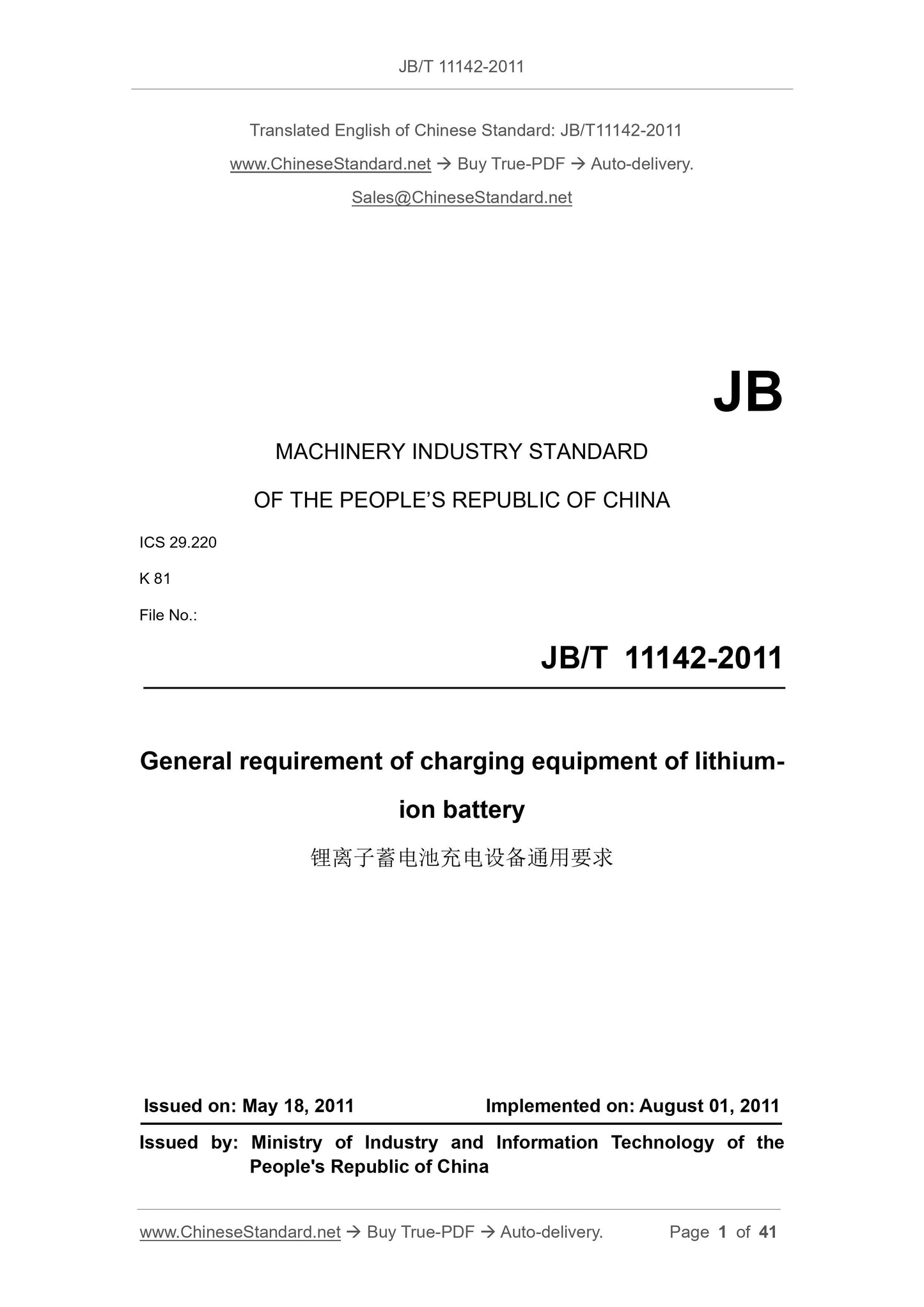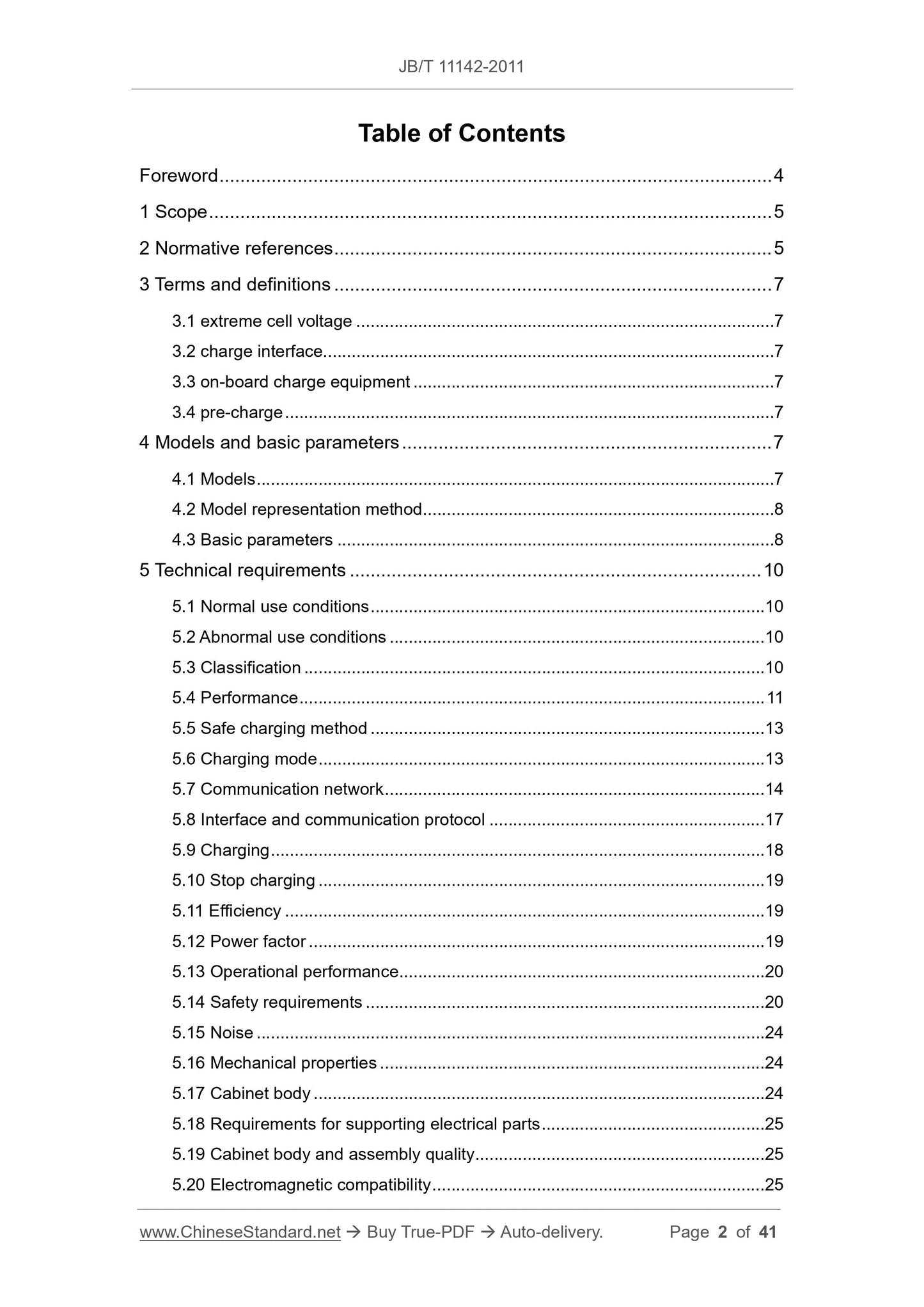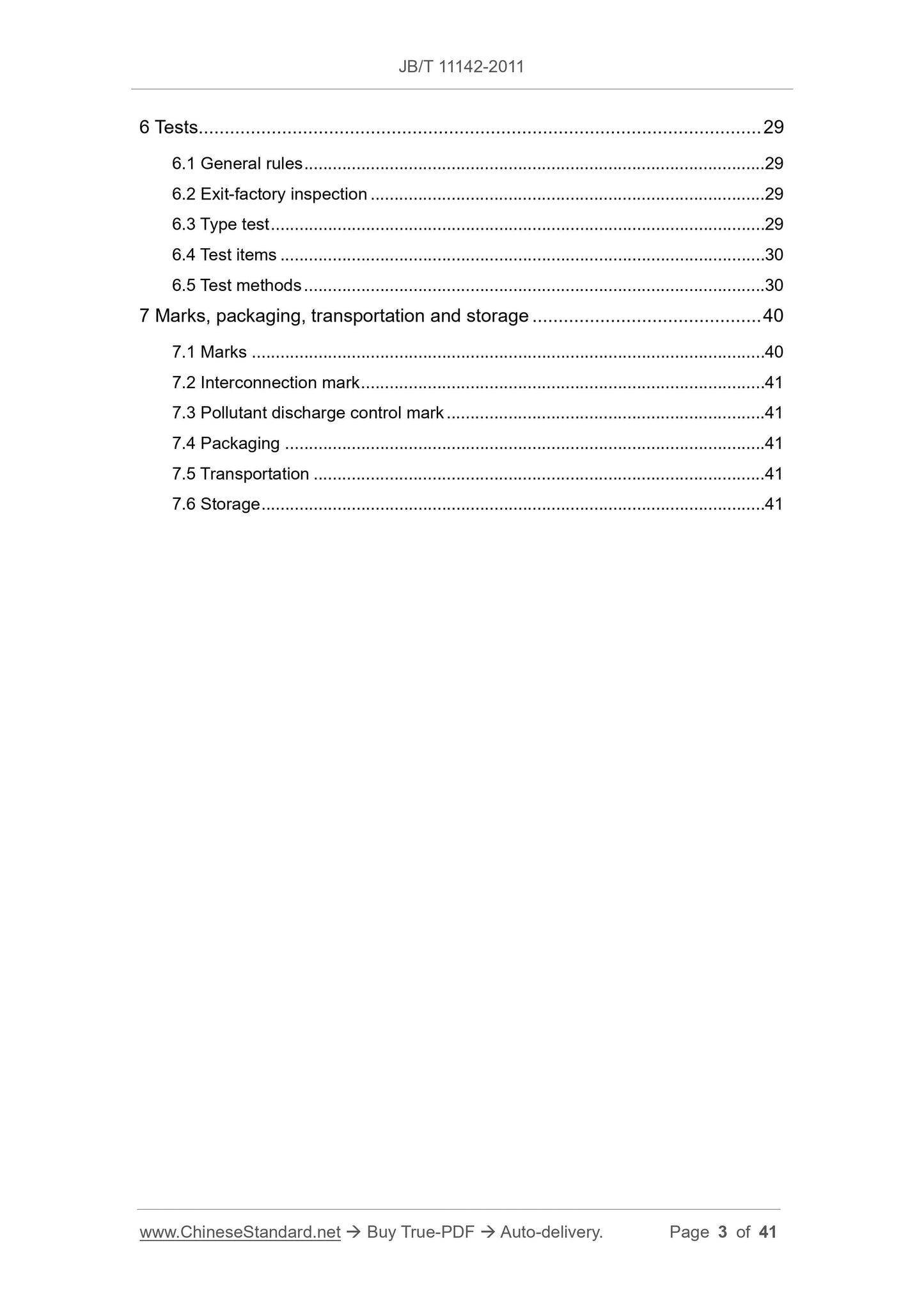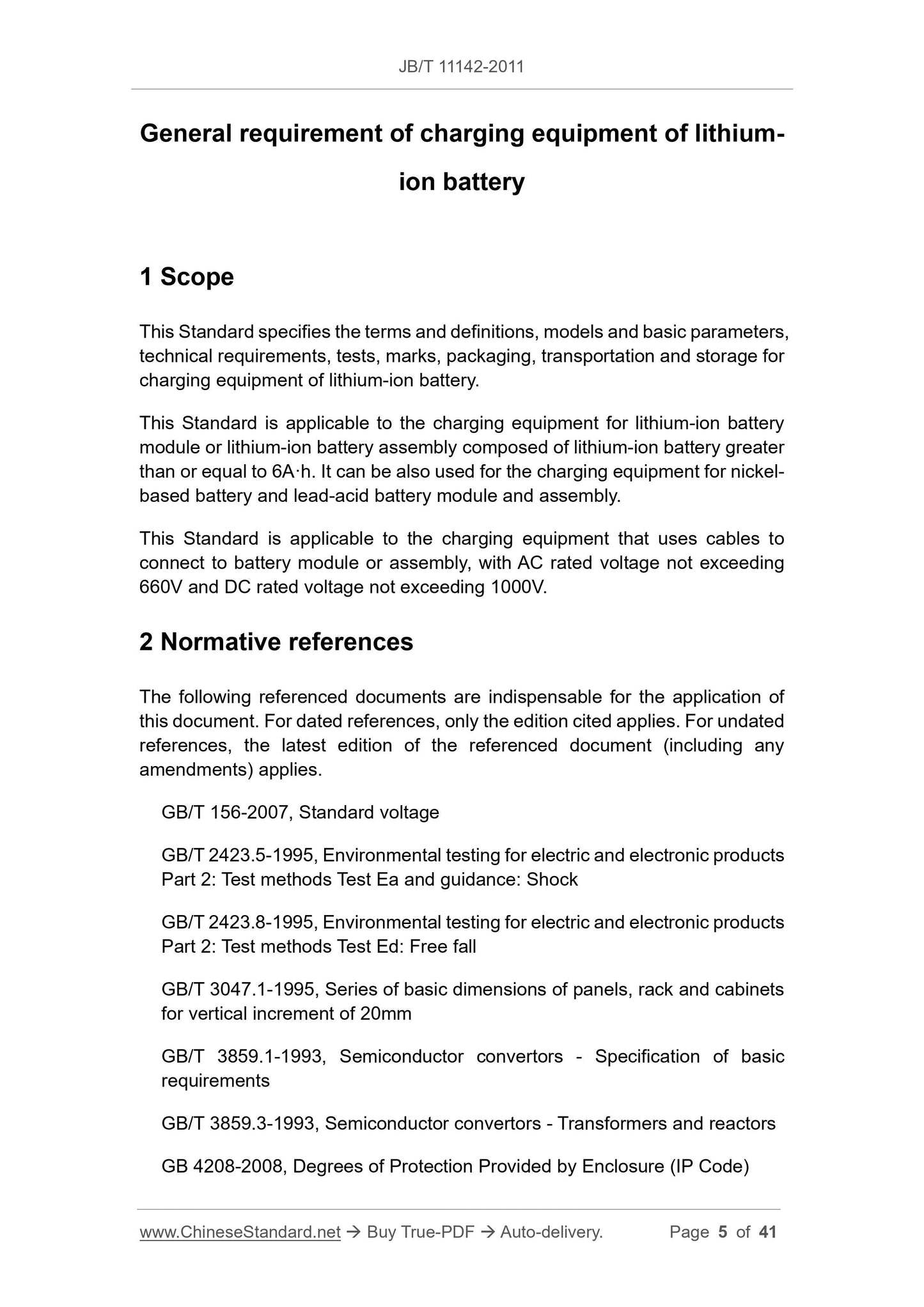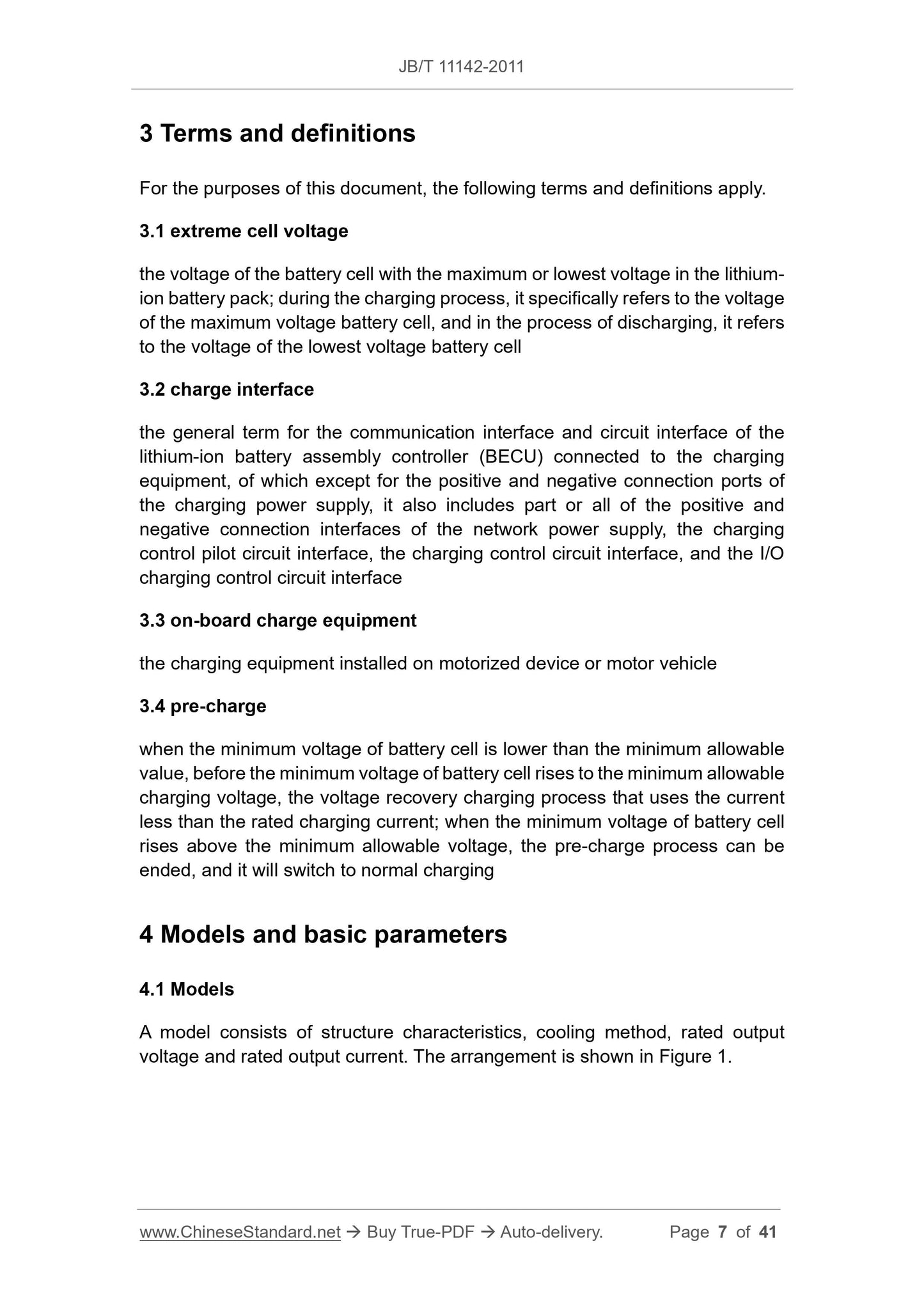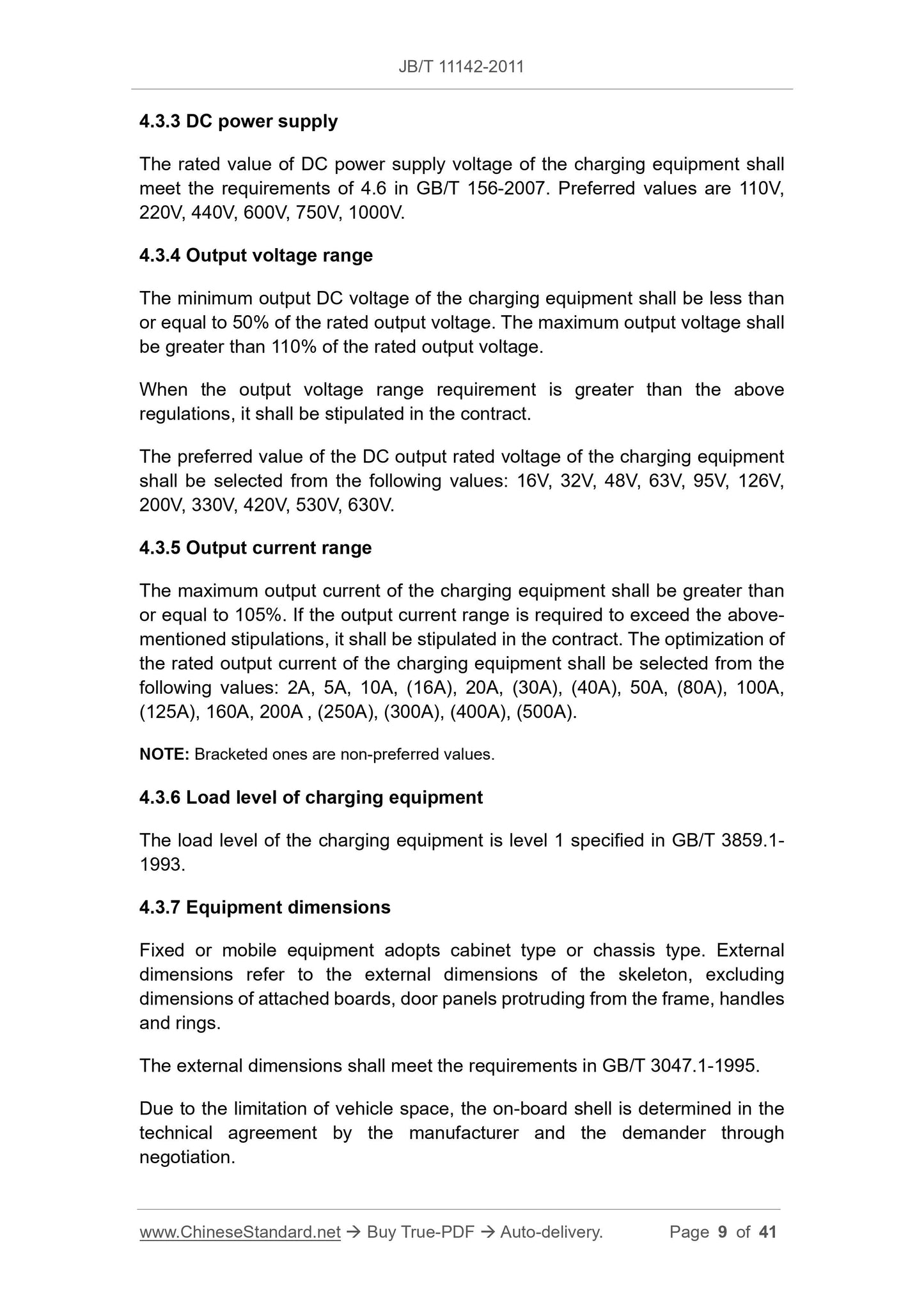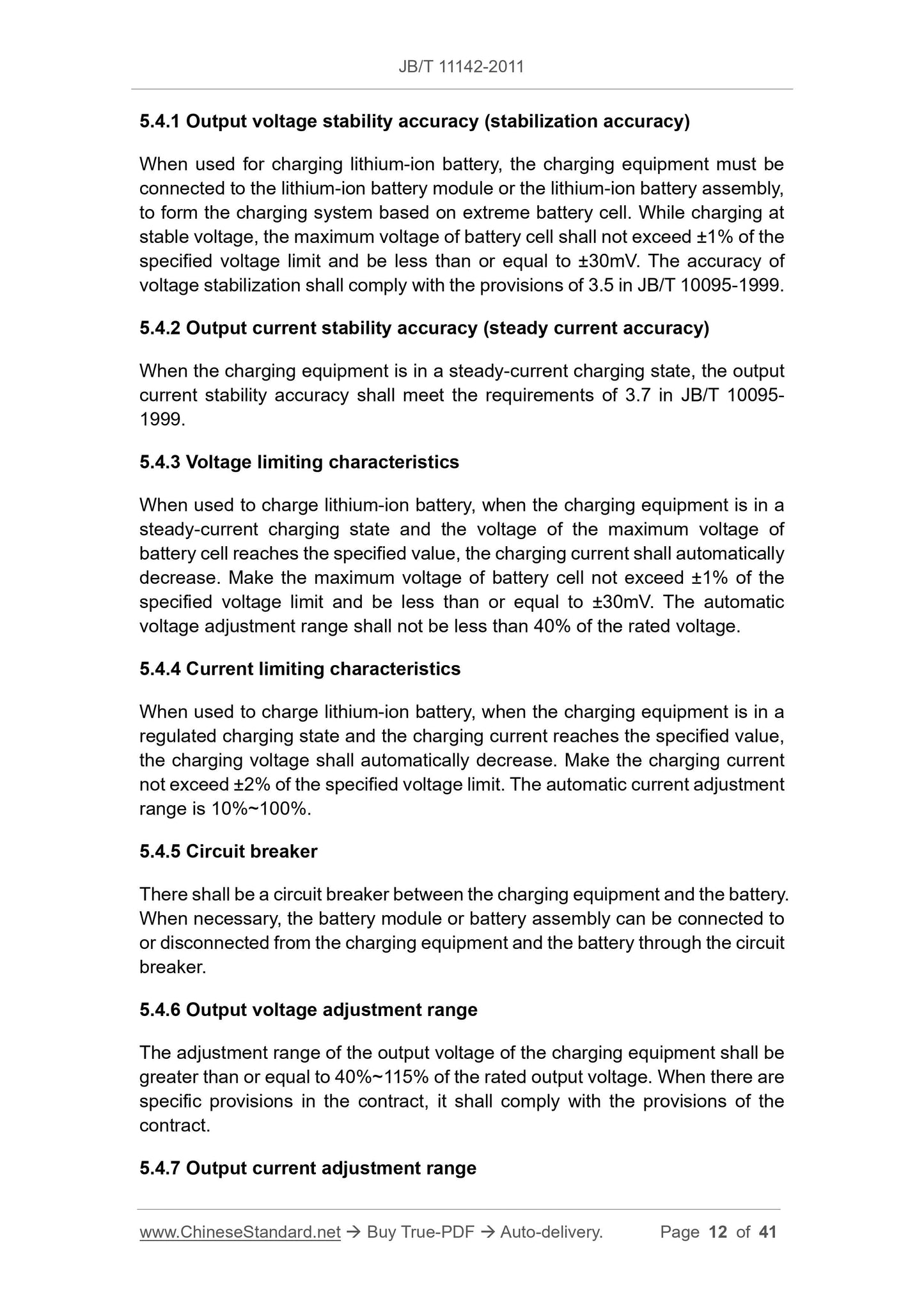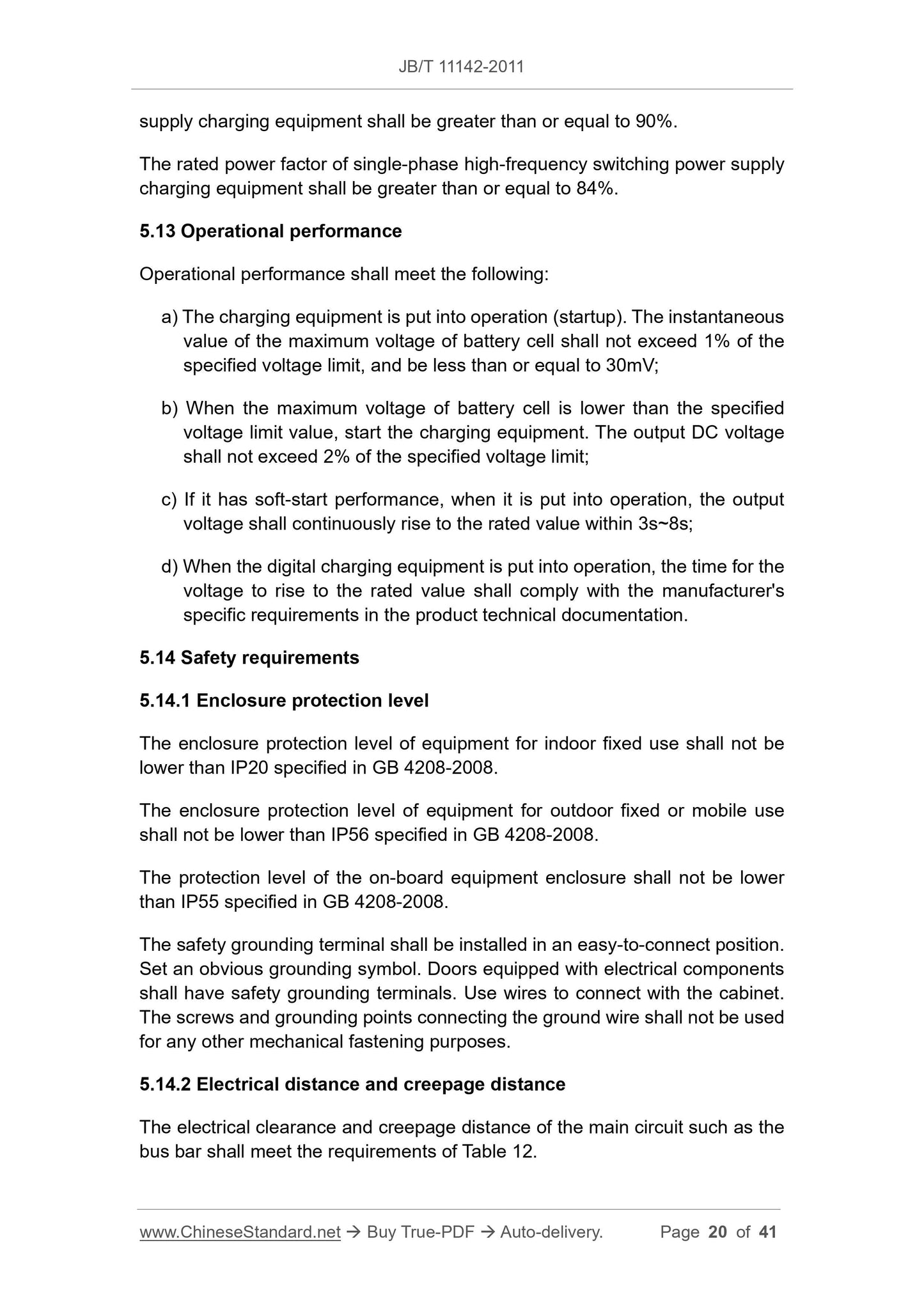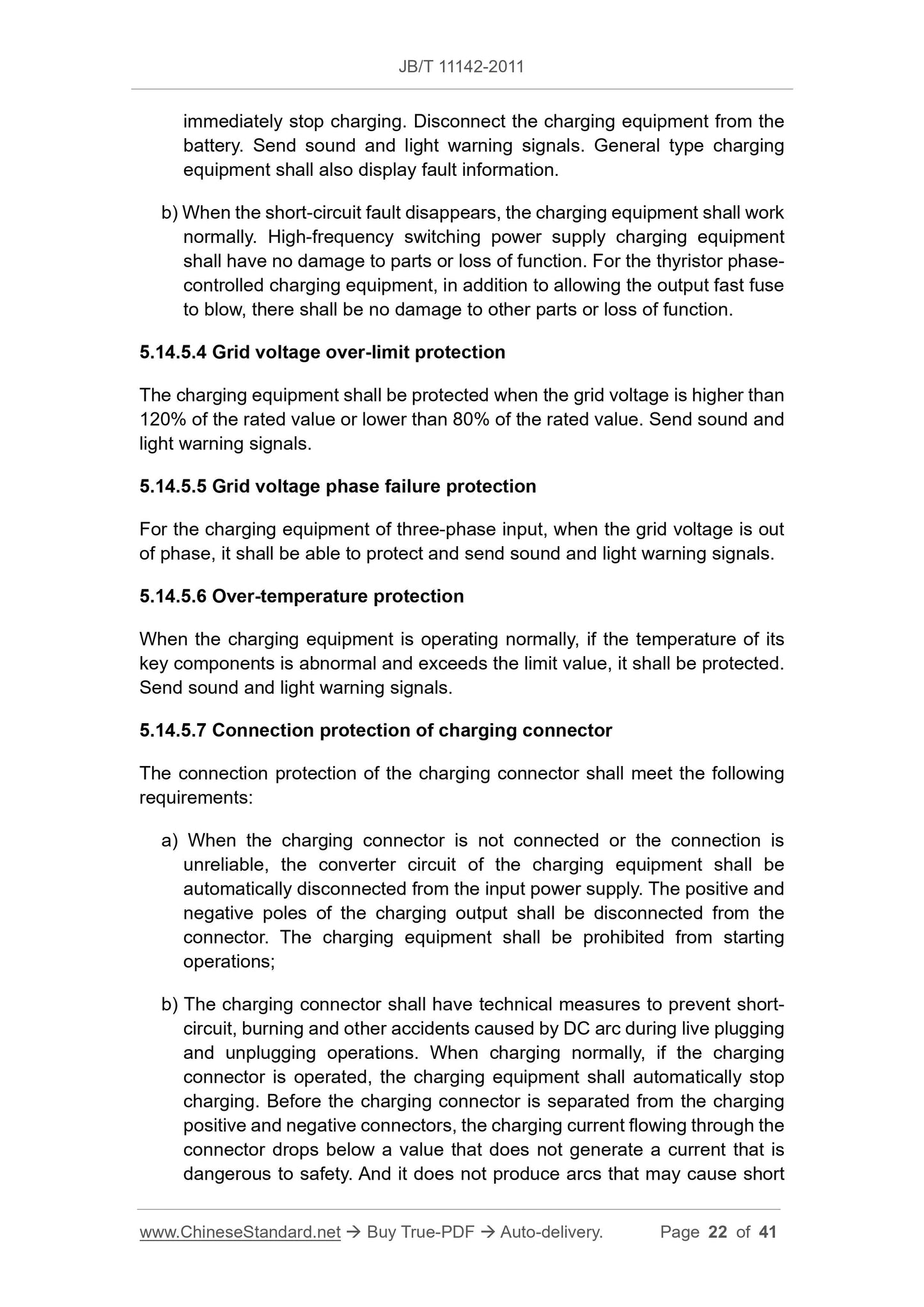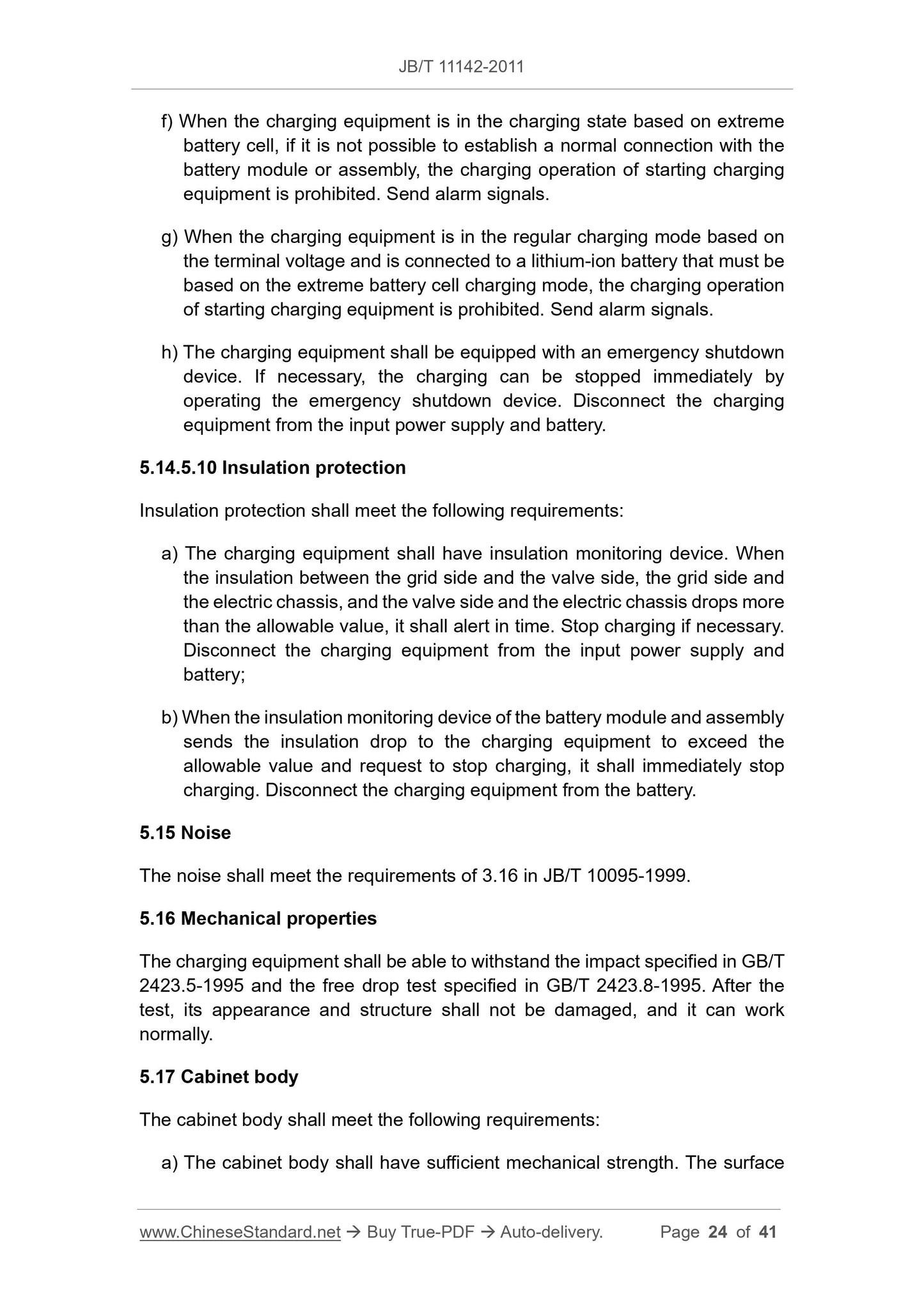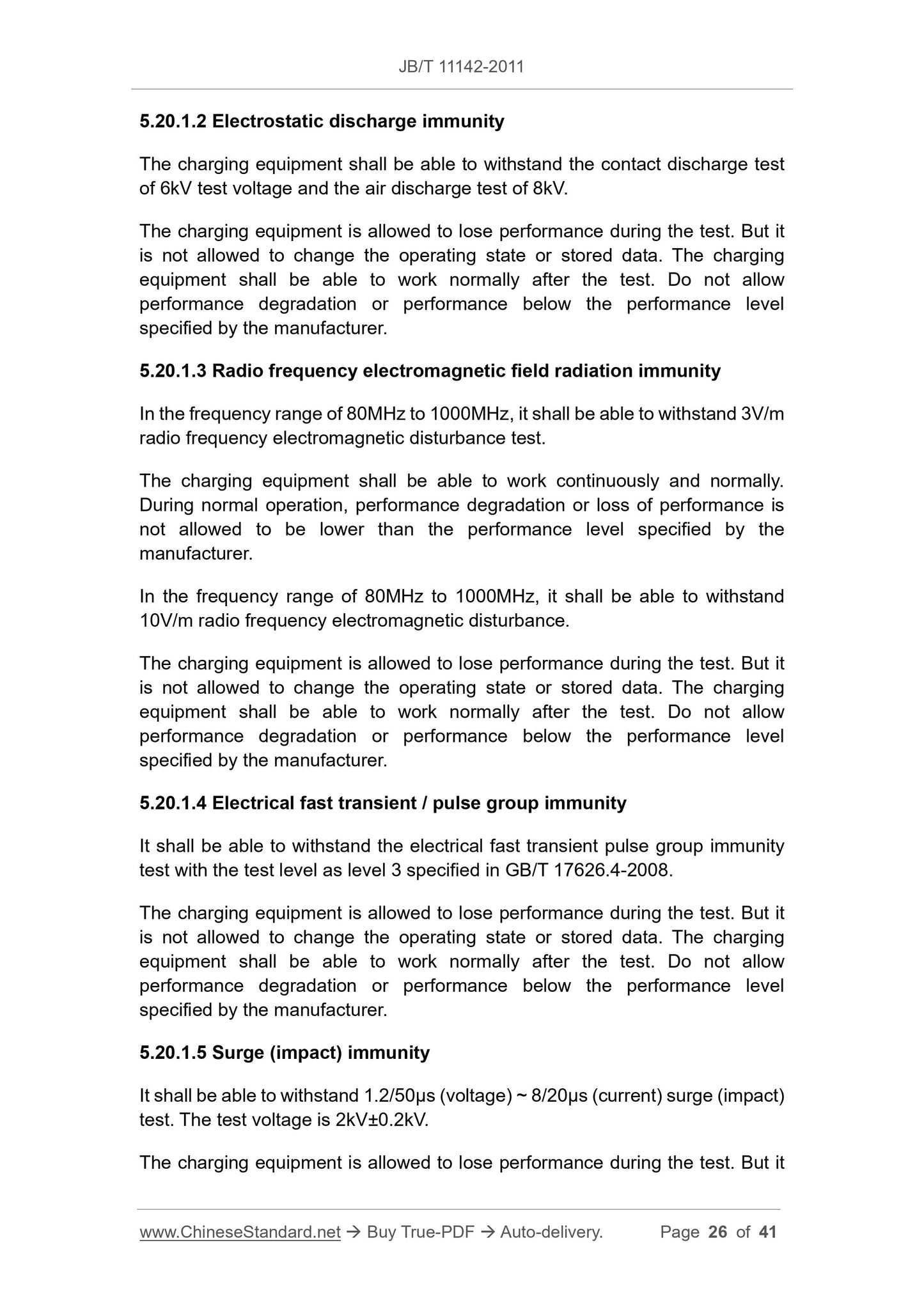1
/
of
12
www.ChineseStandard.us -- Field Test Asia Pte. Ltd.
JB/T 11142-2011 English PDF (JB/T11142-2011)
JB/T 11142-2011 English PDF (JB/T11142-2011)
Regular price
$370.00
Regular price
Sale price
$370.00
Unit price
/
per
Shipping calculated at checkout.
Couldn't load pickup availability
JB/T 11142-2011: General requirement of charging equipment of lithium ion battery
Delivery: 9 seconds. Download (and Email) true-PDF + Invoice.Get Quotation: Click JB/T 11142-2011 (Self-service in 1-minute)
Newer / historical versions: JB/T 11142-2011
Preview True-PDF
Scope
This Standard specifies the terms and definitions, models and basic parameters,technical requirements, tests, marks, packaging, transportation and storage for
charging equipment of lithium-ion battery.
This Standard is applicable to the charging equipment for lithium-ion battery
module or lithium-ion battery assembly composed of lithium-ion battery greater
than or equal to 6A·h. It can be also used for the charging equipment for nickel-
based battery and lead-acid battery module and assembly.
This Standard is applicable to the charging equipment that uses cables to
connect to battery module or assembly, with AC rated voltage not exceeding
660V and DC rated voltage not exceeding 1000V.
Basic Data
| Standard ID | JB/T 11142-2011 (JB/T11142-2011) |
| Description (Translated English) | General requirement of charging equipment of lithium ion battery |
| Sector / Industry | Mechanical and Machinery Industry Standard (Recommended) |
| Classification of Chinese Standard | K81 |
| Classification of International Standard | 29.220 |
| Word Count Estimation | 26,287 |
| Date of Issue | 2011-05-18 |
| Date of Implementation | 2011-08-01 |
| Quoted Standard | GB/T 156-2007; GB/T 2423.5-1995; GB/T 2423.8-1995; GB/T 3047.1-1995; GB/T 3859.1-1993; GB/T 3859.3-1993; GB 4208-2008; GB/T 6113.101-2008; GB/T 9254-2008; GB/T 13422-1992; GB/T 14549-1993; GB/Z 17625.6-2003; GB/T 17626.1-2006; GB/T 17626.3-2006; GB/T 17626.4 -2008; GB/T 17626.5-2008; GB/T 17626.12-1995; GB/T 18858.3-2002; JB/T 10095-1999; JB/T 11137-2011; JB/T 11143-2011; SJ/T 11364 - 2006; ISO 11898-5-2007 |
| Regulation (derived from) | ?MIIT Announcement 2011 No.13 |
| Issuing agency(ies) | Ministry of Industry and Information Technology |
| Summary | This standard specifies the lithium-ion battery charging equipment terminology and definitions, model and basic parameters, technical requirements, tests, signs, packaging, transport and storage. This standard applies to the greater than or equal to 6A �� h lithium-ion battery consists of a lithium-ion battery or Li-ion battery module assembly charging equipment can also be used in nickel-based batteries and lead-acid battery charging equipment modules and assemblies. This standard applies to the use of the cable connecting the battery module or assembly, AC rated voltage not exceeding 660V, DC rated voltage not exceeding 1000V charging equipment. |
Share
